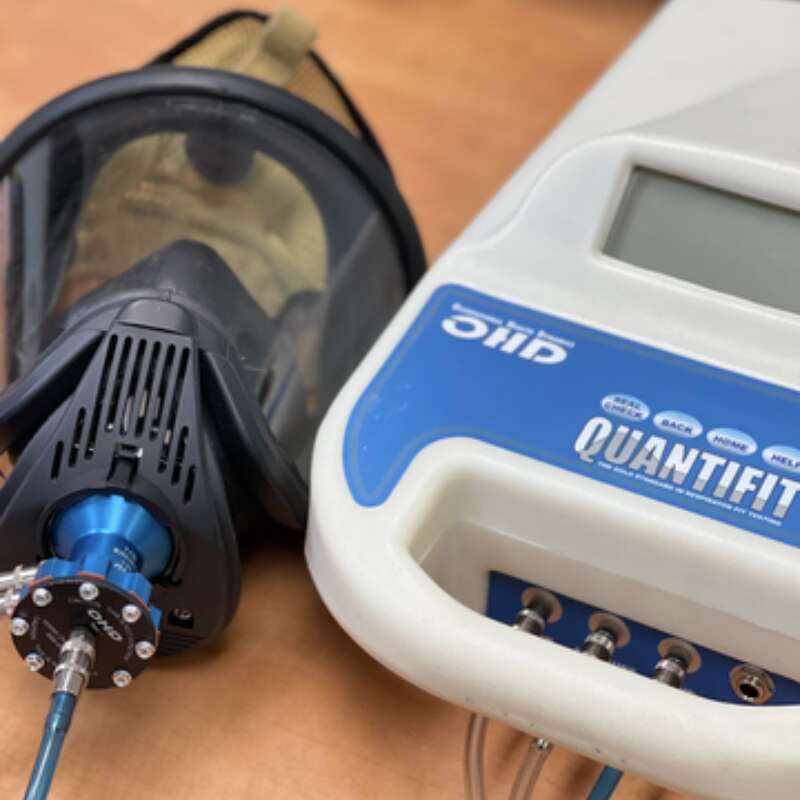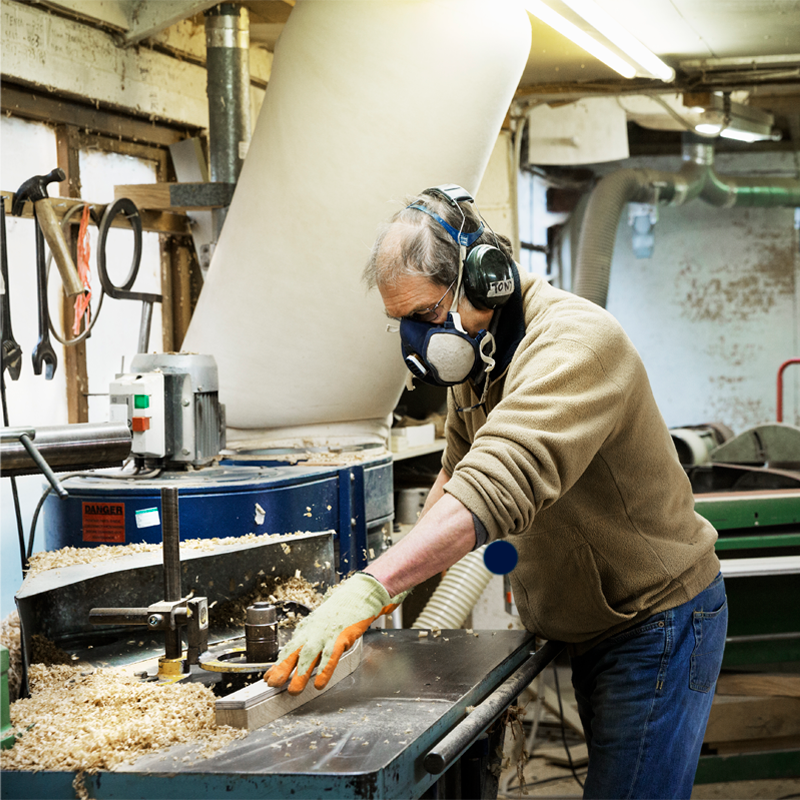As leaders in occupational health and safety, Amerisafe offers a team of professionals who can come to your location to perform Respirator Fit Testing at any time. Whether you’re looking to get a respirator fit test for one employee or for a large group, we can help. Not only is our testing accurate and timely, but we make sure that our respirator fit tests comply with OSHA standards.
A respirator fit test can be described as a type of testing protocol that is conducted with the intent to certify that respirator, such as filtering facepiece respirators, fit someone’s face in a way that is both comfortable and effectively provides that person with the protection that is expected. Typically, in a respirator fit test, the person wearing the mask will be exposed to a testing agent. Then, the wearer’s reaction, lack of reaction, detection, or lack of detection of the agent will be recorded by the fit tester or measured with a specified instrument. Some testing agents are designed to have an odor or certain taste, and others are designed to cause reactions such as coughing when a wearer is exposed to them.
The most important distinction when looking at qualitative vs. quantitative respirator fit testing is that qualitative testing relies on the wearer’s senses to notice leaks. On the other hand, with quantitative testing, leakage is measured with instruments and does not rely on the wearer to provide information.
With a qualitative fit test, the results of the test either end in a passing score or a failing score. A qualitative fit test often uses the wearer’s senses of taste and smell or even their reaction or lack of reaction to a specific agent. If the wearer detects leakage through smell, taste, or reaction during a user seal check, it can be concluded that there is an inadequate respirator fit and it is not fit to be used in an actual hazardous environment. There are four different agents used in a qualitative fit test that are also accepted under OSHA standards. These four different agents are:


A quantitative respirator fit test determines effectiveness as well, but while the results of the test will still end with either a passing or failing score, these scores are now determined by measured amounts of actual leakage instead of relying on the wearer’s senses or physical responses. In quantitative testing, the respirator is attached to a machine that is used to interpret and record leakage results, and if these results do not meet the necessary criteria, they are determined to be unusable in real-world hazardous situations. There are three different agents used in quantitative fit testing that are also accepted under OSHA standards. These three different agents are:
In the majority of situations, respirators are used to protect the human respiratory system against harmful dust, mists, paint vapors, solvents, and more. With the help of properly fitted respirators, many contaminants in the air that can cause bodily harm if inhaled can be filtered out. Some of the many industries that depend on respiratory protection and commonly used respirator masks include:


Respiratory hazards that are blocked by these respirator masks can be extremely dangerous if inhaled. If workers in these industries do not wear respirators or do not wear them properly, serious bodily injury or even death could be possible if inhalation occurs.
With the help of respirator fit testing, workers and employers alike can confidently know that safety precautions are being taken seriously. Respirator testing ensures that workers are wearing a tight-fitting respirator mask properly so that the full effectiveness of these mask’s filtration properties can be utilized.
Amerisafe Group has decades of expertise in respirator fit testing, pre-employment drug screenings, occupational health nurse staffing, and more. Our mobile onsite nurses and physician assistants simplify safety compliance for organizations across industries.
We lead the way in delivering versatile respirator protection services that meet diverse workplace needs. This includes qualitative and quantitative fit testing, user training, mask maintenance, medical clearances, and more. Our occupational health capabilities also span from workers’ comp evaluations and drug screenings to testing for hazardous exposure and vaccination administration.
By having Amerisafe Group as your trusted partner, you ensure worker safety. We provide custom guidance applying proven occupational medicine best practices to your unique risks.
To learn more about our specialized services, contact Amerisafe Group today.
Full facepiece respirators must achieve a minimum quantitative fit test pass level of 500 to ensure adequate protection. This high passing score verifies a tight seal between the rubber facepiece and the wearer’s face, preventing leakage into the mask. In contrast, half-mask respirators only require a test pass level of 100. The more stringent fit requirements for full facepieces provide enhanced coverage of the eyes, nose, and mouth against workplace contaminants.
Respirator users must be fit tested initially, annually, and whenever conditions may impact fit—including changes to facial features or switching respirator makes/models. The checks confirm the device seals adequately against the face, so contaminants are excluded. Following the prescribed fit testing schedule satisfies OSHA 1910.134 requirements and verifies protection against workplace hazards.
Read the announcement here.